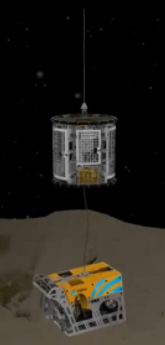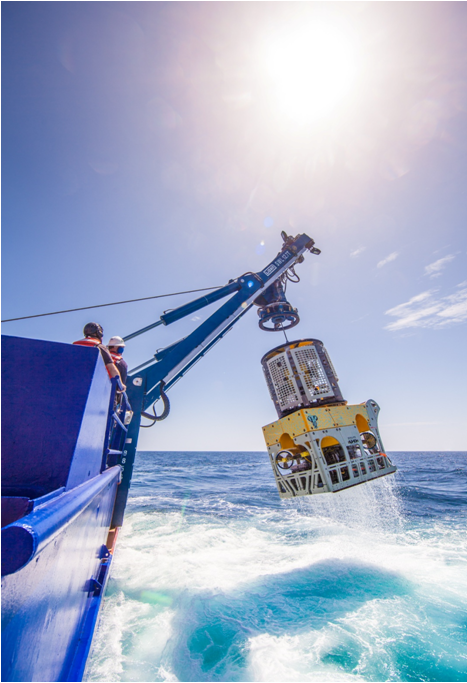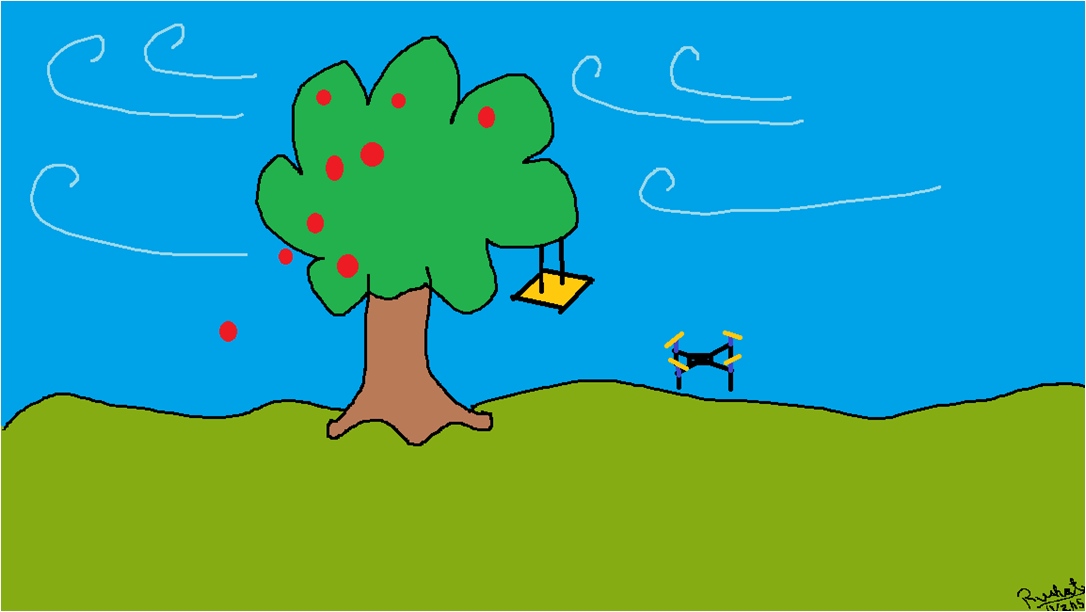Problem Description
Our problem statement is inspired by the challenges faced by FMC Technologies Schilling Robotics personnel while docking their Remote Operated Vehicle (ROV) to the Tether Management System (TMS). The ROV detaches and deploys from the bottom of the TMS when the system is at depth. The TMS is negatively buoyant and is suspended from a ship. As the ship heaves on the surface of the water, the TMS heaves up and down with a slight lateral motion. ROV Operators must dock and latch the ROV to the underside of the moving TMS prior to resurfacing. This can be very challenging for even experienced operators. Autonomous docking is the core problem we aim to solve.
Through this project we will demonstrate the autonomous docking of a quadcopter from the underside of a suspended moving platform. The underwater environment will be simulated by functioning in a GPS degraded environment. At the end of fall semester we have completed our docking platform mechanical design and motion. For the quadcopter we have achieved autonomous hovering, pose estimation using Computer Vision (CV) and integration of CV and position control of quadcopter in simulation.
Use case with system graphical description

A developer at Schilling Robotics visits a trade fair and sees a retrofit kit that adds a minimal payload, and the capability of autonomous docking to a platform moving in a single axis. Having several customers of his unmanned undersea vehicle branch who want a method of navigating to a tether management system with their underwater remotely operated vehicle, he purchases the retrofit. He reasons that it will be fun, and possibly get him a pay point on his next performance cycle if he can demonstrate its usefulness to his supervisor. He purchases the retrofit and declines to fill out a customer survey asking him what further features he wants to see in the next version since this one has all the features he wants already.
He receives the kit and spends a weekend setting up a dock as shown in figure 1. The addition of the software changes to his Phantom 2 takes a few minutes and the hardware install is almost as swift. It’s a windy day and the tree he’d tied his platform too was swaying quite a bit, and after his initial disappointment at the app telling him it was impossible to dock in those conditions, repeatedly mashing the ‘dock’ button finally proved effective and the drone successfully attaches itself to the dock without running into the tree. It even weaves around his bird feeder and succeeds in avoiding a starling that appeared intent on driving the drone out of the air. He is pleased that the retrofit is light and not very cumbersome.
The developer secures funding from his supervisor and contacts the student team who launched the retrofit into a full product. Though hesitant at first, they engage an attorney and draw up a limited use contract for the TDP of the docking kit. The developer is happy, his boss less so when he sees what kind of royalties the developer had agreed to, and the developer realizes he’s going to have to work very hard for that pay point. He gets going and succeeds in adapting the code for his customers’ ROV and TMS. On its first test, the ROV collides with an undersea vent, however the entire test is invalidated when they discover an octopus had attached itself to the ROV camera and that a warning had been displayed by the adapted software, but not where the ROV operator is used to viewing warnings and cautions.

Finally, launch day arrives and the customer is pleased at the results. The ROV docks without needing the use of a heave-compensated winch. The ROV smoothly detaches from the TMS, goes about its mission, and returns to be hauled up on the TMS without incident (figure 2). The customer is also very happy with the user interface, which is a single toggle button, removing the need for lengthy training and decreasing the costs of using the ROV since the operators don’t have to be as skilled at docking any more. The developer gets a bonus from his supervisor, an angry letter from the sailors’ union, and a bill from the UAV kit developers after an independent audit.
